Have you heard the buzz about these upside down tomato planters? You can buy pricey containers and plastic bags in an effort to try this inverted growing technique, but here’s a really inexpensive and, I think, more attractive method than the other DIY how-to’s I’ve seen.
Instructions for Making an Upside Down Tomato Planter
First, find yourself a large (I used a 12″) plastic hanging planter and a tomato plant. I chose a smaller fruit producing variety. Tomato Chello, specifically.
Using a 2″ hole saw, drill a hole in the bottom of the pot. This will be where the plants comes out of the upside down tomato planter.
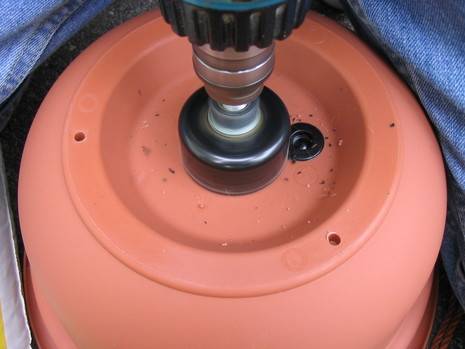
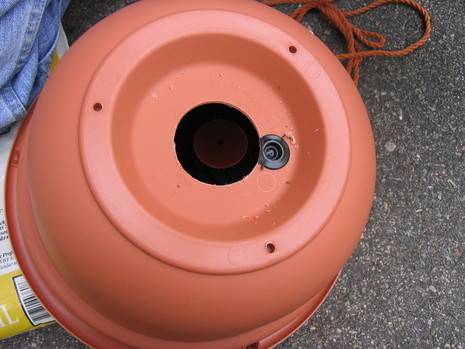
Place a piece of fabric over the bottom of the pot. I used a bit of leftover landscaping fabric. This will keep the dirt from washing through the hole when you water. Cut through your fabric a few inches, or enough to feed your tomato plant’s root ball through.
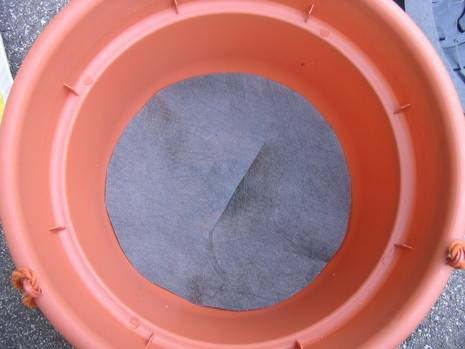
Feed your tomato plant through the hole, upside down, of course. Either hang the pot or have someone hold it while you use one hand to support the plant and the other to fill the pot with potting soil.
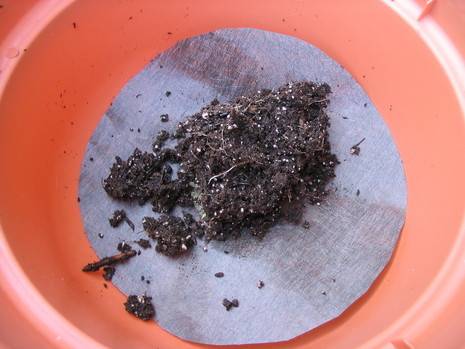
Tamp the dirt around the root ball.
For a finishing touch, plant herbs in the top of your pot. I chose marjoram, oregano and Italian parsley.
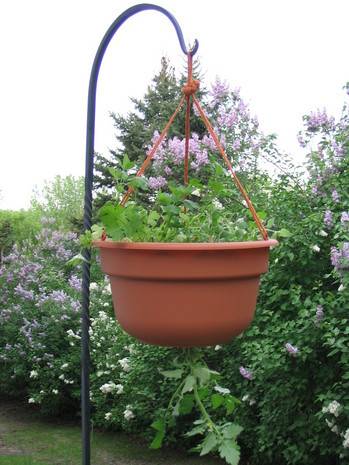
By the next day, my tomato plant was trying to right itself in an attempt to grow toward the sun. As this is the first time I’ve tried this technique, I’m going to assume its normal plant behavior and am awaiting a tasty crop of upside down tomatoes.
Decorating Your Upside Down Tomato Planter
Personally, I don’t think any decoration is needed (it’s a plant, people! it’s already pretty!). But if you do want to spruce up your upside down planter, consider wrapping it in adhesive vinyl paper (like contact paper), painting the outside of the pot, or even etching a design into the pot using a rotary tool.
What Type of Soil to Use?
I know from experience that good soil is the most important factor in getting your tomatoes to grow big and healthy. In fact, our boulevard plants, when compared to our neighbors, are much bigger and have many more flowers (which later will become tomatoes), even though the location, sunlight, and water conditions are basically the same. Why? Because we were careful to amend our soil before planting.
Tomatoes like to grow in slightly acidic soil (around 6 – 7 pH). After checking your soil pH with a simple kit (you can buy it at the garden center), you’ll need to add lime if the soil is too acidic, or sulfur if the pH is too high (too basic). Make sure to add some organic matter (compost) each year, and that the soil isn’t too dense (won’t drain), or too light and fluffy (drains too fast). We’ve found gypsum and peat moss are great additives for getting the soil structure just right.
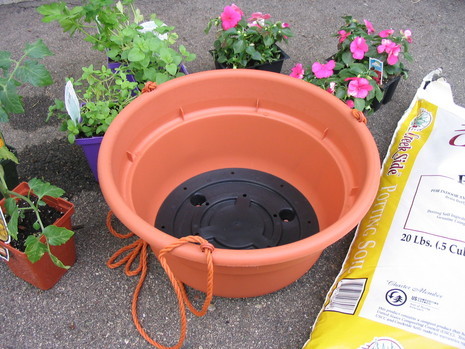
I love the idea but I’m wondering if that is enough soil for the tomato plant I have tried the brand name planter topsy turvy with mixed results